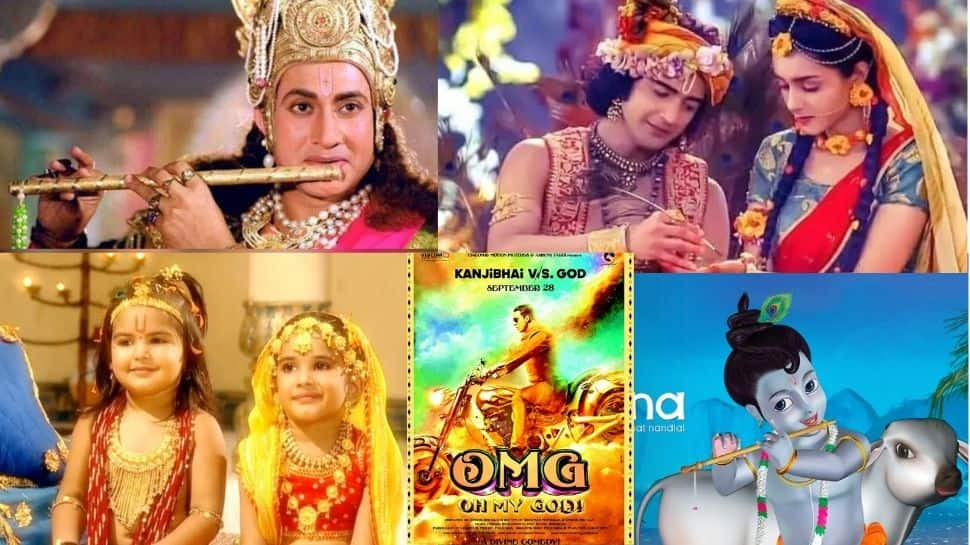
Since most tribal groups live in dense and inaccessible forested areas, they have been able to preserve their ancient customs and practices without a great deal of changes, unlike the urban Hindu society which has been subjected to the pressures of multiple external invasions and new waves of religious and artistic developments. This indicates that some Harappans adopted a simple tribal life after migrating into India, following the collapse of the IVC at around 2000 BCE. The recent DNA study of the skeletal remains found at Rakhigarhi shows strong connections with the Irula, a tribal community of the Nilgiri Highlands. The legend of Lingo-Krishna, however, was probably incorporated into the Gond legends by the pastoral Abhiras (Ahirs), who migrated to Central India from Northwestern India sometime at the beginning of the Christian era, and were assimilated into the Gond society. They practice the lost-wax method of bronze casting that was used in the IVC, and their tradition of worshiping their primary deity Bada Dev (also called Shembhu or Mahadev) under the Saja tree appears to be depicted on the Indus Sacrifice Seal (Mohenjo-Daro seal No.430). The horned head-dress with leafy plumes that they wear on their ceremonial occasions can be seen on multiple Indus seals. The Gond script resembles the Late Harrapan style of writing. Of the Mahabharata, in which Krishna plays a prominent part, must have takenĪs I have argued in a previous article titled "Shiva as Bada Dev: Gond Symbolisms on Indus Seals", there is sufficient evidence that the Gonds may have migrated to their present location in Central India from the Indus Valley. Since the seals and tablets bearing these images date from c.2600īCE – 1900 BCE, it implies that these legends were already well-established at Goods, the tablets were presumably used as storytelling While the seals were used for authenticating traded Lingo-Krishna and they depicted scenes from the life of this heroic warrior-prophet
_varuthapadatha-valibar-sangam-tamil-full-movie-124-sivakarthikyen-124-sri-divya-124-bindu-madhavi-124-soori.jpg)
This analysis indicates that the Indus people were familiar with the legend of Incidentally, the Bindo birds play an important role in the story, for Lingo had befriended the parent Bindo bird and rode on its back all the way to Mount Dhawalgiri where Mahadev had locked up the Gonds inside a mountain cave. Wrestling with tigers, Mahadev standing near his throne, and the Bindo bird attacking Important figures from the Legend of Lingo depicted on a single seal impression: Lingo-Krishna Out what could have been the original outline of the figure.įigure 8: The broken edges on the left side of the tiger-grappling hero on Harappan tablet H95-2486.įigure 9: The proposed outline of the figure on Harappan tablet H95-2486. In theįollowing images, I pointed out the broken edges and have attempted to trace Sharply with the smooth, bright edges of the figure in general. Image we can clearly see the broken edges on the left side, which contrast If we look carefully at this tablet, we will notice that a portion of the image on the left side hasīroken off creating the rough outline of a breast. Source: Wikimedia Commons / Public Domain Source: įigure 7: Mohenjo-Daro seal depicting a man between two tigers. The tiger-wrestling scene appears on multiple Indus seals, and, in all the otherĬases, the person wrestling with the tigers is clearly male.įigure 6: Mohenjo-Daro seal depicting a man grappling with two tigers. This has led to speculations that this could be a female deity. Grappling with the tigers appears to have a breast Source: Īn unusual aspect of this image is that, the person Resembling a six-spoked wheel, is depicted on top.įigure 4: Harappa molded tablet H95-2486, showing a person standing on an elephant and grappling with two tigers. On (or near) an elephant and grappling with two tigers. The Harappan tablet H95-2486 shows a hero or deity standing Fortunately,Īn exact same image can be seen on Harappan tablet H95-2486, which we Image has become very faded and the outlines are not clearly visible. The reverse side of this Harappan tablet (H2001-5075) showsĪ person standing on (or near) an elephant, and grappling with two tigers.


Who had been imprisoned in a cave on Mount Dhawalgiri by Mahadev. Infested with panthers, jackals and other wild animals, when he was searching for the sixteen score Gonds Taking shelter on the branch of a Niruda tree, in the midst of a forest Hence, the image on Harappan tablet H2001-5075Īnd the Dholavira seal can be summarized as follows: Tree, the tiger/panther looking at it, and the other wild animals of the forest

All the symbolisms of the image – the warrior-hero on the


 0 kommentar(er)
0 kommentar(er)
